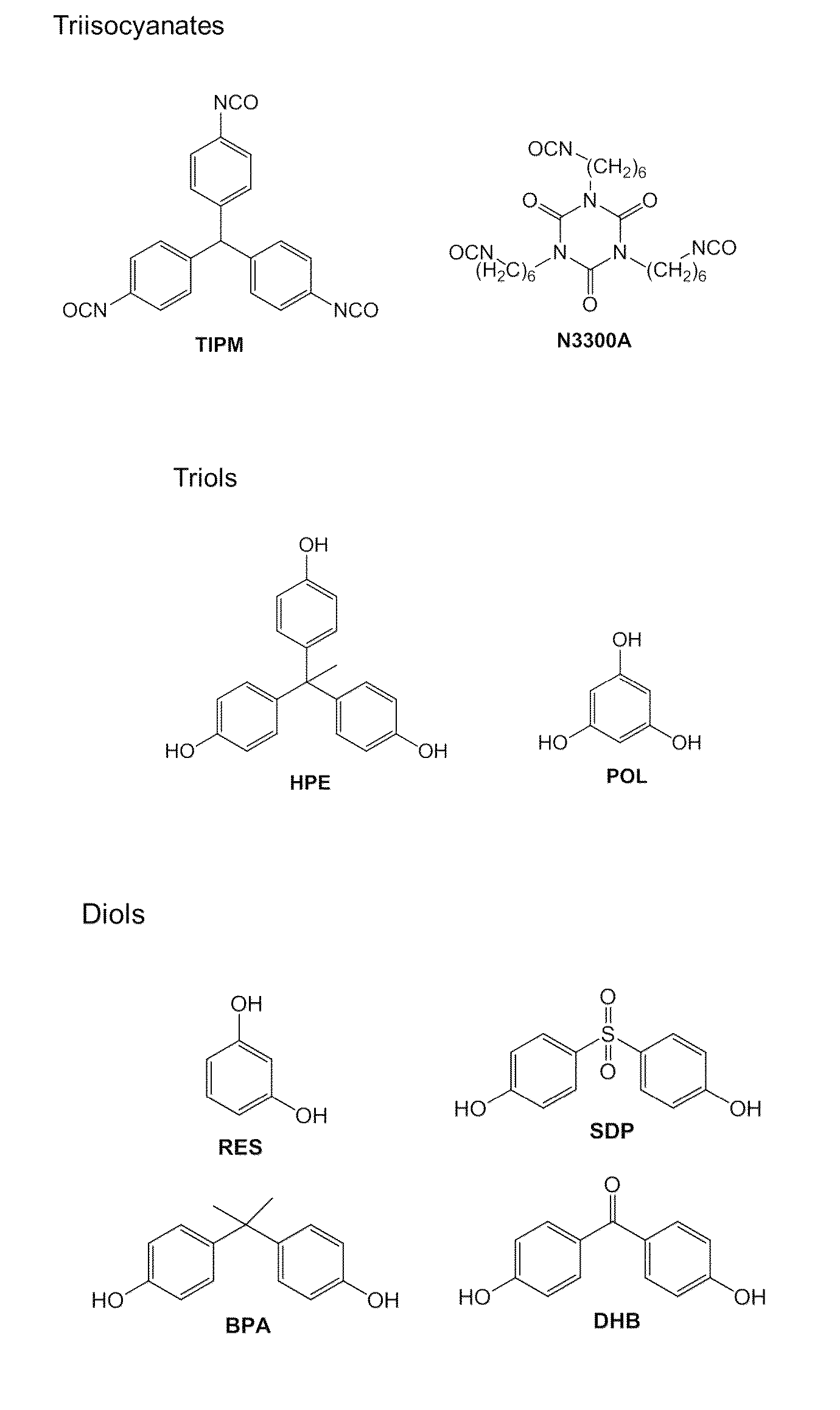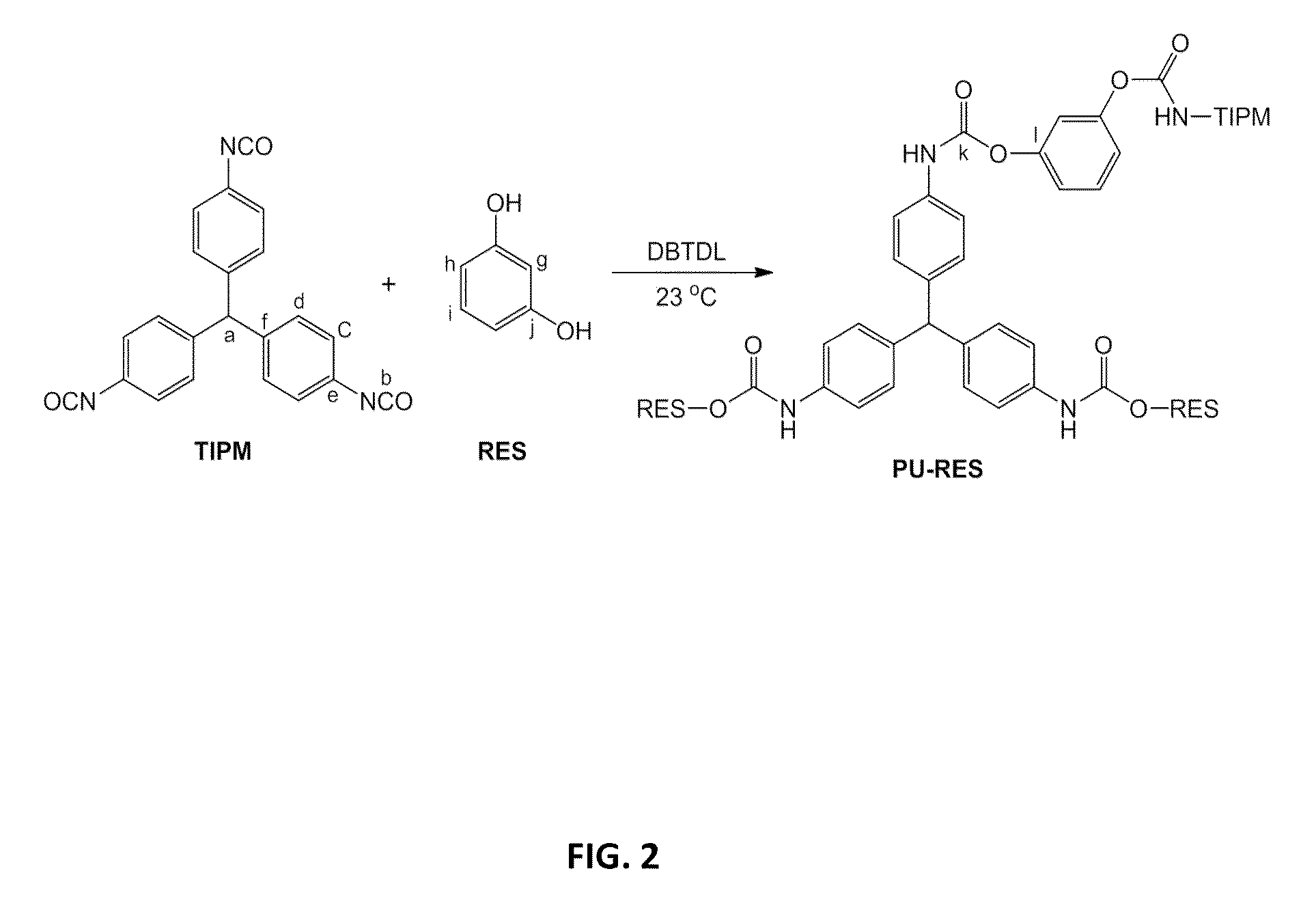Porous polyurethane networks and methods of preparation
a polyurethane and porous technology, applied in the field of porous three-dimensional networks of polyurethane, can solve the problems of inability methods were unable to form gel networks, and methods were generally unable to control the early phase separation of nanoparticles from solvent solutions, so as to facilitate the phase separation of polyurethane particles
- Summary
- Abstract
- Description
- Claims
- Application Information
AI Technical Summary
Benefits of technology
Problems solved by technology
Method used
Image
Examples
examples
[0081]The following examples are only provided as illustrative embodiments of the present invention and are meant to be non-limiting. As follows, polyurethane aerogels may be prepared using suitable methods described below.
[0082]In the following examples, compositions are referenced by a part number that describes the small-molecule isocyanate monomer used, the small-molecule polyol monomer used, and the weight percent of the solution (% w / w) of total monomers used (i.e., the sum of the weight of the isocyanate and the weight of the polyol divided by the total solution weight, which may also include a solvent, a catalyst, etc.). Part numbers are of the form II-PP-xx, where “II” is an abbreviation for the isocyanate monomer used, “PP” is an abbreviation for the polyol monomer (alcohol) used, and “xx” is a number representing the % w / w of all monomers.[0083]“II”: The symbol “aR” represents the small-molecule monomer triisocyanate tris(isocyanatophenyl)methane (Desmodur RE, TIPM), wher...
PUM
| Property | Measurement | Unit |
|---|---|---|
| mean diameter | aaaaa | aaaaa |
| mean pore diameter | aaaaa | aaaaa |
| quasi-static uniaxial compressive modulus | aaaaa | aaaaa |
Abstract
Description
Claims
Application Information
 Login to View More
Login to View More - R&D
- Intellectual Property
- Life Sciences
- Materials
- Tech Scout
- Unparalleled Data Quality
- Higher Quality Content
- 60% Fewer Hallucinations
Browse by: Latest US Patents, China's latest patents, Technical Efficacy Thesaurus, Application Domain, Technology Topic, Popular Technical Reports.
© 2025 PatSnap. All rights reserved.Legal|Privacy policy|Modern Slavery Act Transparency Statement|Sitemap|About US| Contact US: help@patsnap.com



